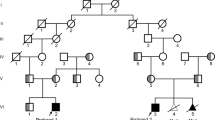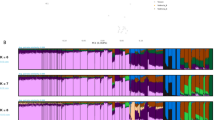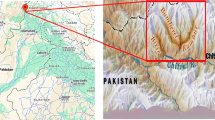Abstract
The origin and relationships of Indian Muslims is still dubious and are not yet genetically well studied. In the light of historically attested movements into Indian subcontinent during the demic expansion of Islam, the present study aims to substantiate whether it had been accompanied by any gene flow or only a cultural transformation phenomenon. An array of 13 autosomal STR markers that are common in the worldwide data sets was used to explore the genetic diversity of Indian Muslims. The austere endogamy being practiced for several generations was confirmed by the genetic demarcation of each of the six Indian Muslim communities in the phylogenetic assessments for the markers examined. The analyses were further refined by comparison with geographically closest neighboring Hindu religious groups (including several caste and tribal populations) and the populations from Middle East, East Asia and Europe. We found that some of the Muslim populations displayed high level of regional genetic affinity rather than religious affinity. Interestingly, in Dawoodi Bohras (TN and GUJ) and Iranian Shia significant genetic contribution from West Asia, especially Iran (49, 47 and 46%, respectively) was observed. This divulges the existence of Middle Eastern genetic signatures in some of the contemporary Indian Muslim populations. Our study reveals that the spread of Islamic faith in the Indian subcontinent was predominantly cultural transformation associated with minor gene flow from West Asia.
Similar content being viewed by others
Log in or create a free account to read this content
Gain free access to this article, as well as selected content from this journal and more on nature.com
or
References
Gadgil, M., Joshi, N. V., Shambu, Prasad U. V., Manoharan, S. & Suresh, Patil in The Indian Human Heritage (eds Balasubramanian, D. & Appaji Rao, N.) 100–129 (Universities Press, Hyderabad, India, 1997).
Singh, K. S. India's Communities. People of India National Series Vol IV (Oxford University Press, India, 1998).
Singh, K. S. People of India: An introduction (Anthropological Survey of India, Calcutta, India,, 1992).
Kosambi, D. D. The culture and civilization of ancient India in historical outline (Vikas Publishing House, New Delhi, 1991).
Majumder, P. P. People of India: biological diversity and affinities. Evol. Anthrop. 6, 100–110 (1998).
Census of India, Census 2001 [http://www.censusindia.net/].
Schimmel, A. Islam in India and Pakistan (Brill Academic Publishers, Leiden, 1982).
Robb, P. A History of India (Palgrave Macmillan Publishers, Hampshire, England, 2002).
Naqvi, S. The Iranian Afaquies contributions to the Qutub Shahi and Adil Shahi Kingdoms (Hussain Book Shop, Hyderabad, India, 2003).
Shokoohy, M. Muslim architecture of South India: the sultanate of Ma'bar and the traditions of the maritime settlers on the Malabar and Coromandel coasts (Tamil Nadu, Kerala and Goa) (Routledge Curzon, New York, 2003).
Papiha, S. S. Genetic variation in India. Hum. Biol. 68, 607–628 (1996).
Afzal, M. Effects of consanguinity on reproductive fitness and certain behavioural traits among Bihar Muslims (Ph.D. thesis, Bhagalpur University, Bihar, 1984).
Bittles, A. H. & Hussain, R. An analysis of consanguineous marriage in the Muslim population of India at regional and the state levels. Annal. Hum. Biol. 27, 163–171 (2000).
Aarzoo, S. S. & Afzal, M. Gene diversity in some Muslim populations of North India. Hum. Biol. 77, 343–353 (2005).
Gutala, R., Carvalho-Silva, D. R., Jin, L., Yngvadottir, B., Avadhanula, V., Nanne, K. et al. A shared Y-chromosomal heritage between Muslims and Hindus in India. Hum. Genet. 120, 543–551 (2006).
Khan, F., Pandey, A. K., Tripathi, M., Talwar, S., Bisen, P. S., Borkar, M. et al. Genetic affinities between endogamous and inbreeding populations of Uttar Pradesh. BMC Genet. 8, 12 (2007).
Terreros, M. C., Rowold, D., Luis, J. R., Khan, F., Agrawal, S. & Herrera, R. J. North Indian Muslims: enclaves of foreign DNA or Hindu converts? Am. J. Phys. Anthropol. 133, 1004–1012 (2007).
Eaaswarkhanth, M., Vasulu, T. S. & Haque, I. Genetic Affinity between diverse ethno-religious communities of Tamil Nadu, India: a Microsatellite study. Hum. Biol. 80, 601–609 (2008).
Balgir, R. S. & Sharma, J. C. Genetic Markers in the Hindu and Muslim Gujjars of Northwestern India. Am. J. Phys. Anthropol. 75, 391–403 (1988).
Tandon, M., Trivedi, R. & Kashyap, V. K. Genomic diversity at 15 fluorescent labeled short tandem repeat loci in few important populations of state of Uttar Pradesh, India. Forensic Sci. Int. 128, 190–195 (2002).
Dubey, B., Meganathan, P. R., Eaaswarkhanth, M., Vasulu, T. S. & Haque, I. Forensic STR profile of two endogamous populations of Madhya Pradesh, India. Leg. Med. (Tokyo) 11, 41–44 (2009).
Sarkar, N. & Kashyap, V. K. Genetic diversity at two pentanucleotide STR and thirteen tetranucleotide STR loci by multiplex PCR in four predominant population groups of central India. Forensic Sci. Int. 128, 196–201 (2002).
Ashma, R. & Kashyap, V. K. Genetic polymorphism at 15 STR loci among three important subpopulation of Bihar, India. Forensic Sci. Int. 130, 58–62 (2002).
Mohapatra, B. K., Trivedi, R., Mehta, A. K., Vyas, J. M. & Kashyap, V. K. Genetic diversity at 15 fluorescent-labeled short tandem repeat loci in the Patel and other communities of Gujarat, India. Am. J. Forensic Med. and Path. 25, 108–112 (2004).
Hima Bindu, G., Trivedi, R. & Kashyap, V. K. Population genetics of seventeen microsatellite loci in three major groups of Andhra Pradesh, India. Forensic Sci. Comm. 7 (2005).
Hima Bindu, G., Trivedi, R. & Kashyap, V. K. Allele frequency distribution based on 17 STR markers in three major Dravidian linguistic populations of Andhra Pradesh, India. Forensic Sci. Int. 170, 76–85 (2007).
Eaaswarkhanth, M., Roy, S. & Haque, I. Allele Frequency Distribution for 15 Autosomal STR Loci in Two Muslim Populations of Tamilnadu, India. Leg. Med. (Tokyo) 9, 332–335 (2007).
Sitalaximi, T., Trivedi, R. & Kashyap, V. K. Autosomal microsatellite profile of three socially diverse ethnic Tamil populations of India. J. Forensic Sci. 48, 211–214 (2003).
Sitalaximi, T., Trivedi, R. & Kashyap, V. K. Genotype profile for thirteen tetranucleotide repeat loci and two pentanucleotide repeat loci in four endogamous Tamil population groups of India. J. Forensic Sci. 47, 1168–1173 (2002).
Shepard, E. M. & Herrera, R. J. Genetic encapsulation among Near Eastern populations. J. Hum. Genet. 51, 467–476 (2006a).
Berti, A., Barni, F., Virgili, A., Iacovacci, G., Franchi, C., Rapone, C. et al. Autosomal STR frequencies in Afghanistan population. J. Forensic Sci. 50, 1494–1496 (2005).
Shepard, E. M. & Herrera, R. J. Iranian STR variation at the fringes of biogeographical demarcation. Forensic Sci. Int. 158, 140–148 (2006b).
Barni, F., Berti, A., Pianese, A., Boccellino, A., Miller, M. P., Caperna, A. et al. Allele frequencies of 15 autosomal STR loci in the Iraq population with comparisons to other populations from the middle-eastern region. Forensic Sci. Int. 167, 87–92 (2007).
Alshamali, F., Alkhayat, A. Q., Budowle, B. & Watson, N. D. STR population diversity in nine ethnic populations living in Dubai. Forensic Sci. Int. 152, 267–279 (2005).
Pérez-Miranada, A. M., Alfonso-Sánchez, M. A., Peña, J. A. & Herrera, R. J. Qatari DNA variation at a crossroad of Human migrations. Hum. Hered. 61, 67–79 (2006).
Abdin, L., Shimada, I., Brinkmann, B. & Hohoff, C. Analysis of 15 short tandem repeats reveals significant differences between the Arabian populations from Morocco and Syria. Leg. Med. (Tokyo) 5, S150–S155 (2003).
Cakir, A. H., Celebioglu, A., Altunbas, S. & Yardimci, E. Allele frequencies for 15 STR loci in Van-Agri districts of the Eastern Anatolia region of Turkey. Forensic Sci. Int. 135, 60–63 (2003).
Seah, L. H., Jeevan, N. H., Othman, M. I., Jaya, P., Ooi, Y. S., Wong, P. C. et al. STR data for the AmpFlSTR Identifiler loci in three ethnic groups (Malay, Chinese, Indian) of the Malaysian population. Forensic Sci. Int. 138, 134–137 (2003).
Wang, C. W., Chen, D. P., Chen, C. Y., Lu, S. C. & Sun, C. F. STR data for the AmpFl STR SGM Plus and profiler loci from Taiwan. Forensic Sci. Int. 138, 119–122 (2003).
Hashiyadaa, M., Itakurab, Y., Nagashima, T., Nataa, M. & Funayama, M. Polymorphism of 17 STRs by multiplex analysis in Japanese population. Forensic Sci. Int. 133, 250–253 (2003).
Chan, K. M., Chiu, C. T., Tsui, P., Wong, D. M. & Fung, W. K. Population data for the Identifiler 15 STR loci in Hong Kong Chinese. Forensic Sci. Int. 152, 307–309 (2005).
Rerkamnuaychoke, B., Rinthachai, T., Shotivaranon, J., Jomsawat, U., Siriboonpiputtana, T., Chaiatchanarat, K. et al. Thai population data on 15 tetrameric STR loci—D8S1179, D21S11, D7S820, CSF1PO, D3S1358, TH01, D13S317, D16S539, D2S1338, D19S433, vWA, TPOX, D18S51, D5S818 and FGA. Forensic Sci. Int. 158, 234–237 (2006).
Yoo-Li, K., Ji-Yeon, H., Yoo-Jin, K., Seok, L., Nak-Gyun, C., Hyun-Gyung, G. et al. Allele frequencies of 15 STR loci using AmpFlSTR Identifiler kit in a Korean population. Forensic Sci. Int. 136, 92–95 (2003).
Dobashi, Y., Kido, A., Fujitani, N., Hara, M., Susukida, R. & Oya, M. STR data for the AmpFlSTR Identifiler loci in Bangladeshi and Indonesian populations. Leg. Med. (Tokyo) 7, 222–226 (2005).
Montelius, K., Karlsson, A. O. & Holmlund, G. STR data for the AmpFlSTR Identifiler loci from Swedish population in comparison to European, as well as with non-European population. Forensic Sci. Int. Gen. 2, e49–e52 (2008).
Sánchez-Diz, P., Menounos, P. G., Carracedo, A. & Skitsa, I. 16 STR data of a Greek population. Forensic Sci. Int. Gen. 2, e71–e72 (2008).
Decorte, R., Engelen, M., Larno, L., Nelissen, K., Gilissen, A. & Cassiman, J. J. Belgian population data for 15 STR loci (AmpFlSTR SGM Plus and AmpFlSTR Profiler PCR amplification kit). Forensic Sci. Int. 139, 211–213 (2004).
Presciuttini, S., Cerri, N., Turrina, S., Pennato, B., Alu, M., Asmundo, A. et al. Validation of a large Italian Database of 15 STR loci. Forensic Sci. Int. 156, 266–268 (2006).
Czarny, J., Grzybowski, T., Derenko, M. V., Malyarchuk, B. A. & Sliwka, D. M. Genetic variation of 15 STR loci (D3S1358, vWA, FGA, TH01, TPOX, CSF1PO, D5S818, D13S317, D7S820, D16S539, D2S1338, D8S1179, D21S11, D18S51, and D19S433) in populations of north and central Poland. Forensic Sci. Int. 147, 97–100 (2005).
Sambrook, J., Fritsch, E. & Maniatis, T. Molecular Cloning: A Laboratory Manual (Cold Spring Harbor Laboratory Press, Cold Spring Harbor, 1989).
Applied Biosystems. Applied Biosystems AmpFlSTR® identifilerTM PCR amplification kit user's manual, instruction for use of products (Applied Biosystems, Foster City, CA, 2001).
Raymond, M. & Rousset, F. GENEPOP (version 1.2): population genetics software for exact tests and ecumenicism. J. Hered. 86, 248–249 (1995).
Excoffier, L., Laval, G. & Schneider, S. Arlequin ver. 3.0: an integrated software package for population genetics data analysis. Evolutionary Bioinformatics Online 1, 47–50 (2005).
Lui, K. & Muse, S. V. Powermarker: integrated analysis environment for genetic marker data. Bioinformatics 21, 2128–2129 (2005).
Felsenstein, J. Phylogeny Inference Package (PHYLIP) version 3.6c/ distributed by the author (Department of Genetics, University of Washington, Seattle, 1993).
Statistical Package for the Social Sciences (SPSS) software 12.0.1, Evaluation version for Windows. Chicago: SPSS Inc.
Ota, T. DISPAN: Genetic Distance and Phylogenetic Analysis (University Park, PA: Tatsuya Ota and Pennsylvania State University, USA, 1993).
Chakraborty, R. Gene Identity in racial hybrids and estimation of admixture rates In: Genetic microdifferentiation in man and other animals (eds Neel, J.V. and Ahuja, Y.R.) 171–180 (Delhi University, Delhi: Indian Anthropological Association,, 1985)..
Elston, R. C., Olson, J. M. & Lyle, Palmer Biostatistical Genetics and Genetic Epidemiology 1–5 (John Wiley and Sons, Inc., 2002).
Barnholtz-Sloan, J. S., Pfaff, C. L., Chakraborty, R. & Long, J. C. Informativeness of the CODIS STR loci for admixture analysis. J. Forensic Sci. 50, 1322–1326 (2005).
Mukherjee, N., Nebel, A., Oppenheim, A. & Majumder, P. P. High-resolution analysis of Y-chromosomal polymorphisms reveals signatures of population movements from Central Asia and West Asia into India. J. Genet. 80, 125–35 (2001).
Cordaux, R., Saha, N., Bentley, G. R., Aunger, R., Sirajuddin, S. & Stoneking, M. Mitochondrial DNA analysis reveals diverse histories of tribal populations from India. Eur. J. Hum. Genet. 11, 253–264 (2003).
Kivisild, T., Rootsi, S., Metspalu, M., Mastana, S., Kaldma, K., Parik, J. et al. The genetic heritage of the earliest settlers persists both in Indian tribal and caste populations. Am. J. Hum. Genet. 72, 313–332 (2003).
Sahoo, S., Singh, A., Himabindu, G., Banerjee, J., Sitalaximi, T., Gaikwad, S. et al. A prehistory of Indian Y chromosomes: evaluating demic diffusion scenarios. . Proc. Natl Acad. Sci. USA 103, 843–848 (2006).
Sengupta, S., Zhivotovsky, L. A., King, R., Mehdi, S. Q., Edmonds, C. A., Chow, C. E. et al. Polarity and temporality of high resolution y-chromosome distributions in India identify both indigenous and exogenous expansions and reveal minor genetic influence of central Asian pastoralists. Am. J. Hum. Genet. 78, 202–221 (2006).
Thanseem, I., Thangaraj, K., Chaubey, G., Singh, V. K., Bhaskar, L. V. K. S., Reddy, B. M. et al. Genetic affinities among the lower castes and tribal group of India: inference from Y chromosome and mitochondrial DNA. BMC Genet. 7, 42 (2006).
Metspalu, M., Kivisild, T., Metspalu, E., Parik, J., Hudjashov, G., Kaldma, K. et al. Most of the extant mtDNA boundaries in South and Southwest Asia were likely shaped during the initial settlement of Eurasia by anatomically modern humans. BMC Genet. 5, 26 (2004).
Quintana-Murci, L., Chaix, R., Wells, R. S., Behar, D. M., Sayar, H., Scozzari, R. et al. Where West meets East: the complex mtDNA landscape of the Southwest and Central Asian corridor. Am. J. Hum. Genet. 74, 827–845 (2004).
Acknowledgements
We thank all the participants of this study. We thank Mustafa Fakruddin Viramgamwala for his help in sample collection. ME, PRM and BD thank Directorate of Forensic Science, Ministry of Home Affairs, Government of India for the fellowship.
Author information
Authors and Affiliations
Corresponding authors
Additional information
Supplementary Information accompanies the paper on Journal of Human Genetics website (http://www.nature.com/jhg)
Supplementary information
Rights and permissions
About this article
Cite this article
Eaaswarkhanth, M., Dubey, B., Meganathan, P. et al. Diverse genetic origin of Indian Muslims: evidence from autosomal STR loci. J Hum Genet 54, 340–348 (2009). https://doi.org/10.1038/jhg.2009.38
Received:
Revised:
Accepted:
Published:
Issue date:
DOI: https://doi.org/10.1038/jhg.2009.38
Keywords
This article is cited by
-
Characterizing the diversity of MHC conserved extended haplotypes using families from the United Arab Emirates
Scientific Reports (2022)
-
Contrasting maternal and paternal genetic histories among five ethnic groups from Khyber Pakhtunkhwa, Pakistan
Scientific Reports (2022)
-
Thalassemias in South Asia: clinical lessons learnt from Bangladesh
Orphanet Journal of Rare Diseases (2017)
-
Genetic evidence for an East Asian origin of Chinese Muslim populations Dongxiang and Hui
Scientific Reports (2016)
-
Forensic STR loci reveal common genetic ancestry of the Thai-Malay Muslims and Thai Buddhists in the deep Southern region of Thailand
Journal of Human Genetics (2014)



